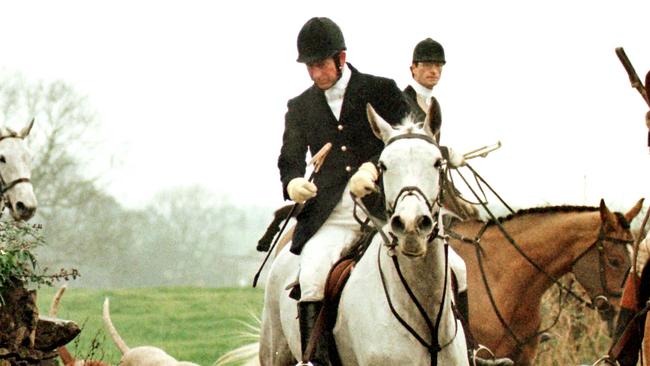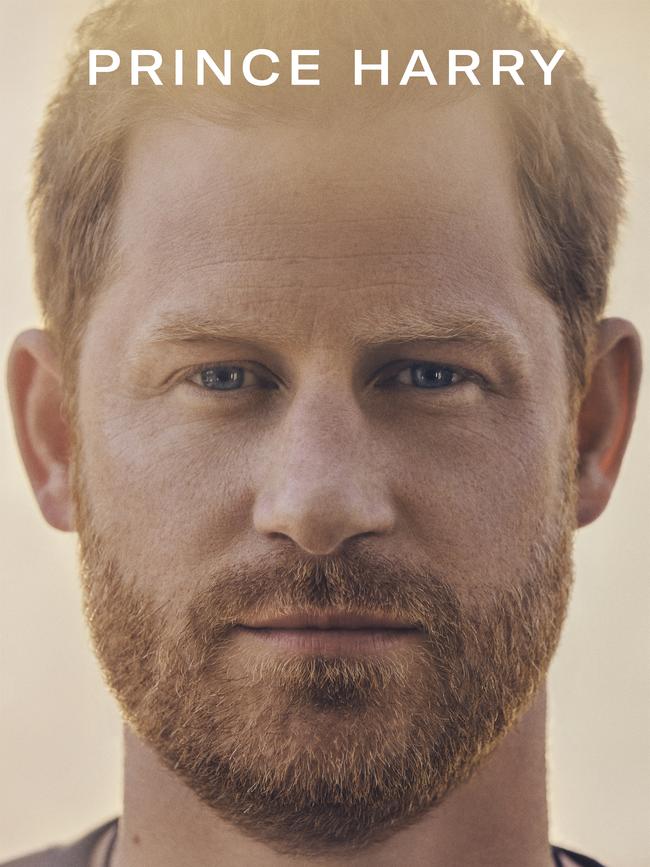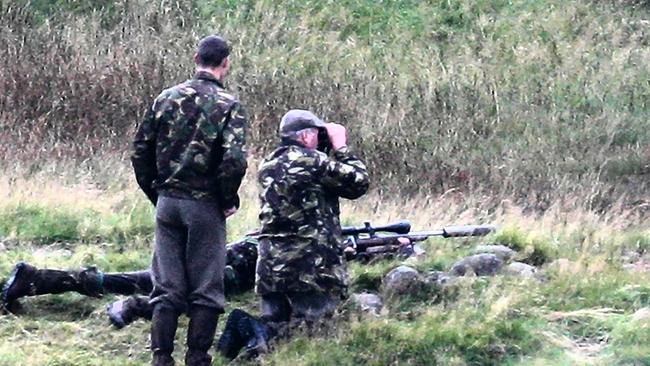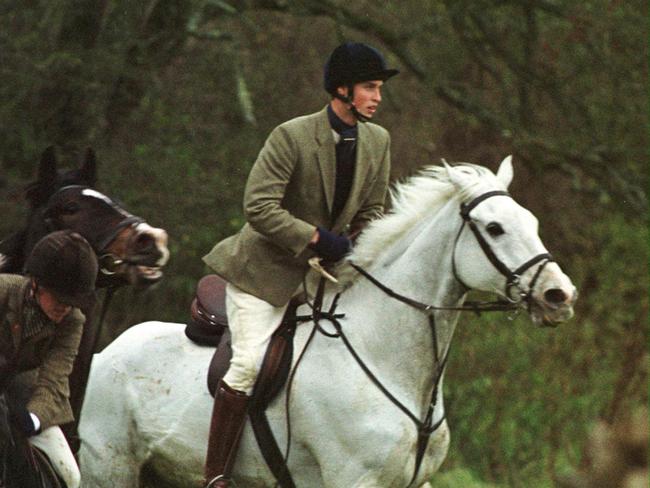Hunters or conservationists? Bloodthirsty royals may have to pick a side
Harry’s new memoir recounts a gory hunting ritual from his childhood. Does the royal family’s thirst for shooting fit uneasily with their public passion for conservation?

When he was 15, the Duke of Sussex endured a stomach-churning initiation. As he recounts in his memoir, Spare, Prince Harry was sent to stalk red deer on the Balmoral estate, accompanied by an “old-school” guide, Sandy, who looked as though “he’d [hunted] mastodons”.
After the prince had shot his prey with a rifle, Sandy pushed his head inside the carcass. “I was shocked … by the infernal smell,” he recalls. “My breakfast jumped up from my stomach … My nose and mouth were full of blood, guts and a deep, upsetting warmth.” When Harry emerged, his face dripped with blood. His family appear to have seen this as a necessary part of his path to manhood.
That was not Harry’s first experience of “blooding”, which he describes as “a show of respect for the slain, an act of communion by the slayer”. He killed a rabbit as a child while out with his beloved nanny, Tiggy Legge-Bourke. He remembers her dipping her fingers into its body, “scoop[ing] out a dollop of blood and smear[ing] it tenderly across my forehead, down my cheeks and nose”.

As a teenager he killed rabbits, pigeons and squirrels, and it was during a shooting weekend at a country house that he first had a line of cocaine. It all seems a world away from Harry’s new life of rescuing battery chickens, being captivated by hummingbirds and eating plant-based meals with his weekday-vegan wife, Meghan, in Montecito, California.
While tales of fraternal fights and frostbitten penises dominated the headlines about Harry’s memoir, its publication has also renewed attention on the royal family’s love of shooting, stalking and hunting - hobbies that seem an unnatural and, some argue, a hypocritical fit with the family’s frequently stated passion for conservation and environmentalism.
Bloodsports are a royal tradition, from the famous post-Christmas pheasant shoot at Sandringham, a tradition continued by the King - at the event last month Princess Anne’s bull terrier is said to have attacked a gamekeeper’s dog - to grouse-shooting at Corgarff, near Balmoral. The Prince and Princess of Wales (Kate is a keen markswoman with her own shotgun) have taken Prince George, nine, shooting since 2018. Queen Elizabeth II learnt to stalk deer as a girl and was often photographed at shoots with Prince Philip, but later she preferred to handle the gun dogs, training her spaniels to pick up the carcasses. Philip was known as the “trigger-happy prince” in his youth and even shot a tiger in India in 1961 - the same year he became president of the World Wide Fund for Nature.
In January 2022, Princess Eugenie, 32, was reportedly given a shooting party as a Christmas present by the late Queen. Her father, Prince Andrew, who memorably described a party to which he invited Jeffrey Epstein as “a straightforward shooting weekend”, went shooting in November on the Windsor estate with Anne and Prince Edward - which displeased Charles, who wants them to keep their distance from their disgraced brother.
A 2018 poll by YouGov, on behalf of the charities the League Against Cruel Sports and Animal Aid, found that almost seven in ten Britons wanted the shooting of birds for sport banned. Pheasants and some partridge species - about 60 million of which are released into the countryside to be shot each year - are not native to the UK, and in 2020 the government announced both would be classed as species that imperil native wildlife such as insects and plants. Critics also say that managed grouse moors cause ecological damage because the landscapes are treeless, reducing biodiversity.

The campaign group Peta described Harry’s killing of the stag as the “epitome of privilege”, telling Newsweek that it was “according supremacy to one living, feeling being over another; the stag’s life was considered expendable for a hunter’s amusement”.
Shooting had already landed Harry and William - whom their mother, Diana, dubbed the “killer Wales” for their prowess with guns - in a number of difficult situations. In 2014 the brothers went hunting wild boar and stags in Spain days before William took part in a campaign against poaching.
Two years ago William, now 40, was named the new patron of the British Trust for Ornithology, a charity that says it is “looking out for birds”. However, he was promptly called upon to look into hunting and wildlife management at Sandringham after a little owl - a protected species - was found in a trap set by gamekeepers on the Norfolk estate. The owl had ended up in a type of trap often laid to exterminate pests such as rats, which eat partridge and pheasant eggs.
Harry, 38, said by royal sources to be the best shot in the family, was interviewed by police in 2007 after two hen harriers - rare and protected birds of prey - were killed at Sandringham. Witnesses had seen the birds being shot, an offence that carries a prison sentence of up to six months. Harry denied responsibility. In 2014, after the prince pledged to work tirelessly to save Africa’s wildlife, a photo emerged from a decade earlier showing him crouching over the body of a water buffalo he had killed on a hunting trip in Argentina.

Harry, who is president of the conservation group African Parks, no longer appears to take part in hunting. The Palace dismissed claims in 2018 that he had skipped the Christmas shoot that year because his wife disapproved. The conservationist Dame Jane Goodall later said he had stopped “because Meghan doesn’t like hunting”. The Sussex children may break with the stalking tradition too: in an interview with The Daily Telegraph earlier this month, Harry said: “Would I encourage Archie to stick his head inside a carcass? Probably not.”
Yet an invitation to a royal shooting weekend is still seen as a welcome into the bosom of the royal family: in 2010 Kate Middleton’s parents joined a shooting party at Balmoral. In an episode of The Crown, Diana assists Prince Philip in killing an imperial stag - thereby passing “the Balmoral test” and getting the green light to marry Charles.

“Sandringham is not really a great estate for shooting - it hasn’t got interesting topography such as lots of creeks and hills for birds to come at you from different angles,” says a royal source. “What it does have is all the bells and whistles: beaters who beat the birds out of the grounds, a great spread at lunch and amazing places to rest and eat. There’s one that’s a sort of game lodge, with white linen tablecloths, French windows and the best wine. Shooting is 95 per cent about great food and 5 per cent about being outdoors and the birds.” In the past shooters might brag about their “bag” (the number of birds they had shot) but it is no longer considered polite.
Although he goes out with keen marksmen including Lord Soames, Winston Churchill’s grandson, King Charles, according to friends, much prefers stalking. The ethical arguments there are different: many in the countryside defend attempts to control the deer population because their natural predators, the wolf and the lynx, are extinct in Britain, and deer damage woodland and soil. Supporters argue that when deer are not culled, many eventually starve.
The UK deer population is currently at a record high. Since muntjac deer were introduced to the UK in the 19th century, they have changed woodlands markedly, eating plants and shrubs that many birds rely on, including the nightingale.
“It’s wonderful to see deer in the landscape, and they are magical, but they are having a significant impact on some of our more fragile species,” says one conservationist. In 2020 Queen Elizabeth was urged by Dave Morris, an environmental campaigner and former director of Ramblers Scotland, to cull more deer at Balmoral.
While the spare has apparently made his choice, this perhaps illustrates a dilemma for the King and his heir. Do they see themselves as landowners first - with all the traditional trappings of shooting and stalking - or as conservation leaders and animal-lovers? They are trying to straddle both camps, and may find they have to pick a side.
The Sunday Times



To join the conversation, please log in. Don't have an account? Register
Join the conversation, you are commenting as Logout